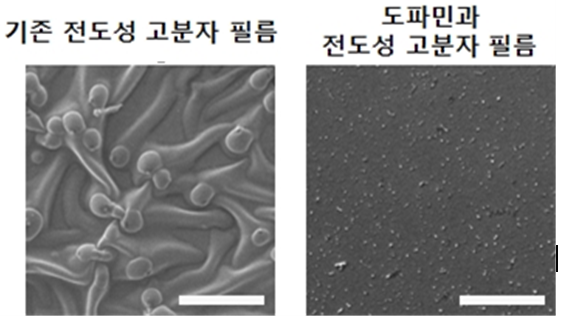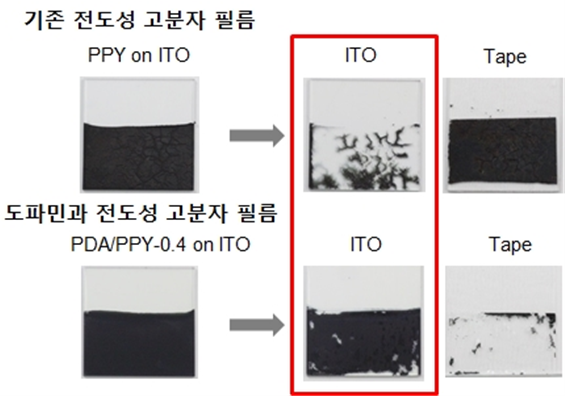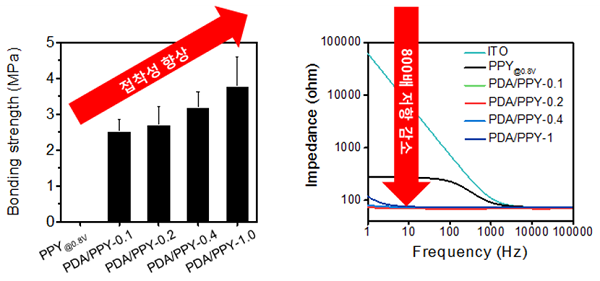Media Center
A multimedia mosaic of moments at GIST
GIST Excellence
[Press Release] Professor Jae Young Lee"s research team uses bio-inspired adhesive to improve electrically conductive polymers
- 엘리스 리
- REG_DATE : 2016.07.28
- HIT : 983
Professor Jae Young Lee"s research team uses bio-inspired adhesive
to improve electrically conductive polymers

(From left): Professor Jae Young Lee, Ph.D. student Semin Kim, and Master"s student Lindy K. Jang
A research team at the Gwangju Institute of Science and Technology (GIST) led by Professor Jae Young Lee of the School of Material Sciences and Engineering has dramatically improved electrode performance by using dopamine (DA), which is a bio-inspired adhesive molecule that mimics the bio-adhesive moieties of marine mussels, to electrochemically polymerize polypyrrole (PPY) to form a conductive coating (PDA/PPY) on indium tin oxide (ITO) electrodes. By doing this, the resultant PDA/PPY film demonstrated increased adhesion of up to 3.7 ± 0.8 MPa and the modified ITO electrodes had electrochemical impedances two to three orders of magnitude lower than that of an unmodified electrode.

Image 1. Scanning electron micrographs of PPY and PDA/PPY. PPY and PDA/PPY
samples were electrochemically synthesized on ITO at 0.8 V and 0.5 V
(vs. SCE), respectively, for 300s. Scale bars represent 50 μm.
These results are significant because PPY, which has been widely used for electrode surface modification to improve electrical performance, and PDA, which when used as an adhesive forms an insulating layer and is not electrically conducive, are not able to independently satisfy the two most important criteria for electrode performance: adhesion and electrical conductivity. Therefore, the electrochemically polymerized PDA/PPY coating is able to resolve this issue by providing improved adhesion and conductivity for electrodes, which will be useful for various applications such as batteries and biosensors.

Image 2. Photographs of the PPY- or PDA/PPY-coated ITO electrodes (2.5 × 2.5 cm)
before and after the Scotch tape detachment test.

Image 3. Bonding strengths of the PPY control and various PDA/PPY films on ITO electrodes, and the electrochemical impedance spectra of PDA/PPY-coated ITO electrodes.
Their paper entitled "Electrochemical deposition of conductive and adhesive polypyrrole-dopamine films" was authored by Semin Kim, Lindy K. Jang, Hyun S. Park, and Jae Young Lee and was published in Scientific Reports on July 27, 2016.
Professor Jae Young Lee said, "This research is expected to complement the shortcomings of conventional electrically-conductive polymer films and will contribute to improving the performance of biometric electrodes and sensors."